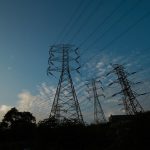Maximizing Safety in Power Construction Zones

Image courtesy of Minnesota DOT under Attribution-NonCommercial 2.0 Generic License, resized to 700 x 391 pixels.
Temporary work zones, such as power construction zones, present numerous safety challenges. Between the interruption of normal operations, increased traffic, and the constant coming and going of vehicles, equipment, materials and employees, safety protocols can often get stretched to the limit. The purpose of this post is to provide tips on how to setup work zones in a way that reduces potential hazards and maximizes safety.
How to Optimize Safety within Power Construction Zones
The safest work zones are those that limit interruptions and retain tight levels of control. They should also be regularly inspected and maintained to ensure that all safety protocols are followed. According to Power Magazine, here are the recommended steps that must be taken to promote safety when setting up power construction zones.
- Assess the work-zone-specific risks to identify potential hazards, and include findings in pre-job safety briefings conducted daily.
- Create and execute a thorough safety plan, customized for the work activity. The plan should contain objectives, measurable goals, and a list of requirements to remain safe at all times.
- Ensure employees and contractors are trained on how to be safe in an active construction zone. Importantly, training content does not necessarily need to be created internally, as there are free training programs offered by relevant organizations like the National Safety Council.
- Ensure employees have access to the proper PPE, including testing the PPE periodically to ensure it meets standards.
- Ensure implementation of access control measures – i.e., make sure only authorized workers can enter the zone.
- Electronically surveil the site at all times to detect suspicious activity.
As you can see, power construction zone safety is not rocket science, but it does require diligence and a willingness to put in the work before construction starts. While this is not directly related to the primary topic of this blog – emergency preparedness – there is a lot of overlap because safety is a core component of restoration and recovery. So please do not skimp on these critical safety steps, regardless of whether you’re working in a construction zone or restoring outages.



